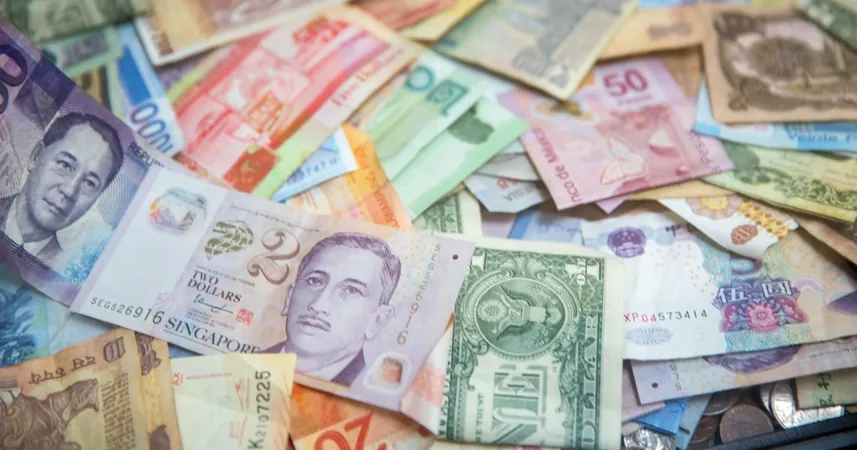
Hong Kong’s Market Integrity in the Spotlight: What Investors Need to Know
2025-09-03
Author: Chun
A Financial Epicenter at a Crossroads
Hong Kong, a cornerstone of Asia's financial landscape, is now navigating a tumultuous sea of regulatory reforms and systemic risks. With sweeping policy changes between 2023 and 2025 aimed at boosting transparency and operational efficiency, the city's market witnessed a phenomenal HK$127 billion in IPOs within just seven months of 2025. But amidst these optimistic figures lies a market exposed to global uncertainties.
Revolutionary Reforms: Progress Meets Pitfalls
In late 2023, the Hong Kong Exchanges and Clearing Limited (HKEx) reinvented its listing procedures, merging numerous guidelines into a singular, clearer "Guide for New Listing Applicants." This move significantly reduced compliance hurdles. Additionally, the new 'double dipping' reforms opened the door for existing shareholders to partake in IPOs under tightened conditions, striking a balance between flexibility and market fairness.
However, the game-changer came in August 2025, when a stringent regulatory framework for stablecoins took effect. Requiring all stablecoin issuers to secure a license from the Hong Kong Monetary Authority (HKMA) and back tokens with high-quality assets, the city now positions itself as a trailblazer in digital asset regulations. The broader LEAP Framework, set to license 11 virtual asset trading platforms by 2025, propels Hong Kong’s commitment to innovation while curbing potential financial fraud.
The Shadow of Systemic Risks
Despite these advancements, Hong Kong's market is still vulnerable to external shocks. Its currency peg to the U.S. dollar ties it closely to U.S. monetary policies, making it a conduit for foreign capital flowing into China. The implications are significant, especially with increased U.S. tariffs on Hong Kong exports and potential additional trade hurdles looming on the horizon.
Moreover, the volatility linked to global indices—driven by events like the U.S.-China trade war—can send ripples throughout the region. Research indicates that Hong Kong’s intermediary role magnifies its exposure to fluctuations in both the American and Chinese markets, potentially destabilizing an otherwise well-regulated environment.
Strategic Insights for Investors
For investors, the interplay of regulatory progress and systemic risks creates a complex yet promising landscape. On one hand, reforms have significantly strengthened Hong Kong’s market, especially in the rapidly evolving digital assets sector. The proactive approach by the Securities and Futures Commission (SFC) regarding anti-money laundering (AML) practices aligns it with global standards.
Yet, dependence on mainland China and vulnerability to U.S. policy changes mean that investors must adopt a cautious strategy. Focusing on assets that align with the new regulatory environment, such as companies listed on the HKEx or licensed virtual asset trading platforms, can provide some stability. Sectors reliant on cross-border trade—like logistics and manufacturing—face considerable risks due to geopolitical instability. Diversifying across regions and keeping a close eye on U.S.-China relations will be essential for navigating this shifting risk landscape.
Moving Forward with Caution
While Hong Kong’s regulatory reforms have solidified its market integrity, the prevailing systemic risks tied to its geopolitical context warrant a measured approach. The agility displayed by the SFC and HKMA in tackling these emerging challenges is commendable, yet investors must remain watchful against macroeconomic adversity. Striking a balance between innovation and resilience will be the key to defining Hong Kong’s future role in the Asian financial ecosystem.




 Brasil (PT)
Brasil (PT)
 Canada (EN)
Canada (EN)
 Chile (ES)
Chile (ES)
 Česko (CS)
Česko (CS)
 대한민국 (KO)
대한민국 (KO)
 España (ES)
España (ES)
 France (FR)
France (FR)
 Hong Kong (EN)
Hong Kong (EN)
 Italia (IT)
Italia (IT)
 日本 (JA)
日本 (JA)
 Magyarország (HU)
Magyarország (HU)
 Norge (NO)
Norge (NO)
 Polska (PL)
Polska (PL)
 Schweiz (DE)
Schweiz (DE)
 Singapore (EN)
Singapore (EN)
 Sverige (SV)
Sverige (SV)
 Suomi (FI)
Suomi (FI)
 Türkiye (TR)
Türkiye (TR)
 الإمارات العربية المتحدة (AR)
الإمارات العربية المتحدة (AR)